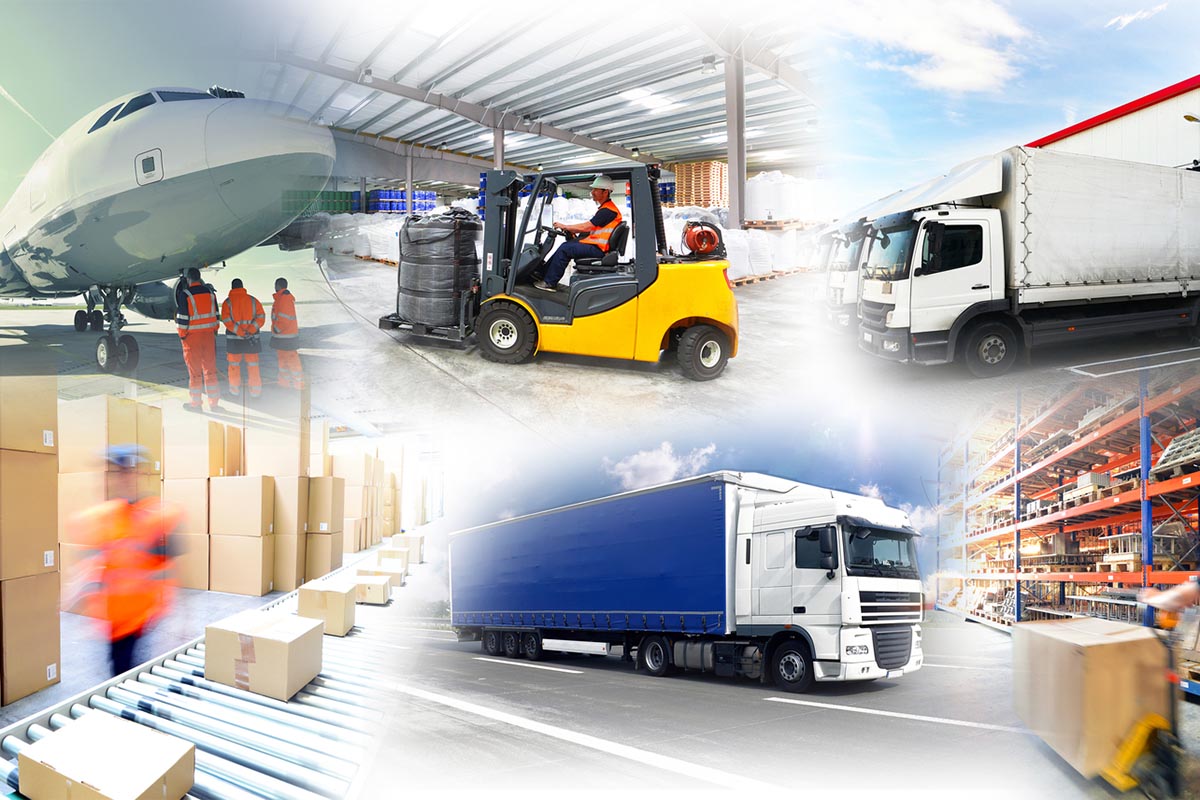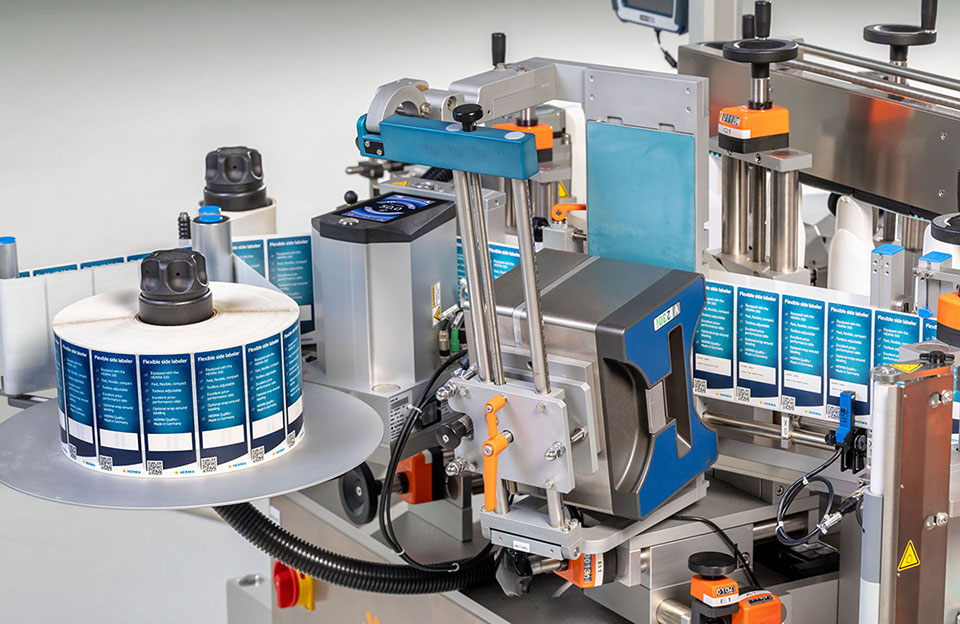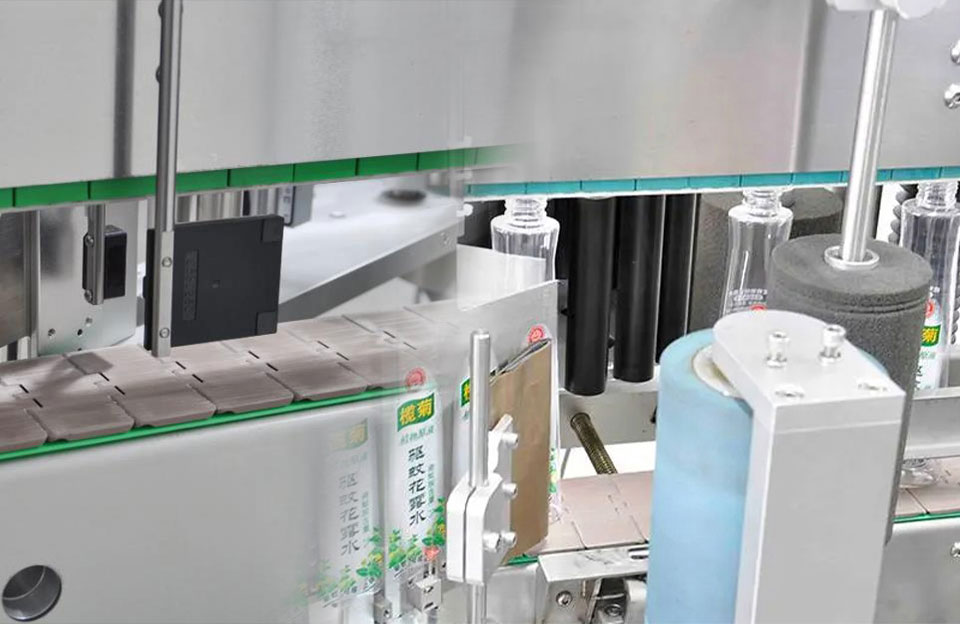The logistics and transportation industry plays a vital role in the global economy by facilitating the movement of goods, services, and people. It encompasses various activities, processes, and systems that ensure the efficient flow of resources from one location to another.
Logistics involves the management of the flow of goods, information, and resources from the point of origin to the point of consumption. Labels play an important role in conveying product information and delivery locations. Therefore, the application of labeling machines in logistics and transportation industry is wide.

The Development Process of Logistics and Transportation Industry
The development process of the logistics and transportation industry has evolved in response to various factors such as globalization, technological advancements, and changing customer demands. Here are the key stages and factors that have shaped its development:
- Early Transportation Systems: The earliest forms of transportation involved using animals, carts, and boats to move goods and people. These systems were limited in capacity and speed, and transportation networks were primarily localized.
- Industrial Revolution: The Industrial Revolution in the 18th and 19th centuries brought significant advancements in transportation technology. The introduction of steam-powered trains and ships revolutionized long-distance transportation, enabling the movement of goods and people on a larger scale.
- Infrastructure Development: The growth of transportation infrastructure, including roads, railways, ports, and airports, played a crucial role in expanding the logistics and transportation industry. Governments and private entities invested in infrastructure projects to connect regions and enable more efficient movement of goods. The expansion of transportation networks paved the way for national and international trade.
- Standardization and Regulation: As the industry grew, the need for standardization and regulation became evident. Standards for containerization, packaging, labeling, and documentation were established to facilitate smooth operations and enhance efficiency.
- Technological Advancements: The advent of technologies such as computers, the internet, and mobile communications transformed the logistics and transportation industry. These advancements enabled the automation of processes, real-time tracking, efficient routing, and improved supply chain visibility. Companies started adopting transportation management systems, warehouse management systems, and other software solutions to streamline operations and enhance customer service.
- Globalization and Supply Chain Integration: The rise of globalization led to the integration of supply chains on a global scale. Companies began sourcing raw materials and manufacturing components from different countries, necessitating the development of complex logistics networks. Freight forwarding, customs brokerage, and cross-border logistics services became critical for managing international trade flows.
- E-commerce and Last-Mile Delivery: The growth of e-commerce has profoundly impacted the logistics and transportation industry. The rise in online shopping created a surge in parcel volumes, leading to the need for efficient last-mile delivery services. Logistics providers had to adapt their operations to cater to the demands of e-commerce, such as shorter delivery times and flexible fulfillment options.
- Sustainability and Green Initiatives: Environmental concerns and sustainability have become significant factors in developing the logistics and transportation industry. Companies are adopting greener practices, such as using electric vehicles, optimizing fuel consumption, and implementing eco-friendly packaging solutions. The focus on sustainability drives innovation and the development of more environmentally friendly transportation options.
Application of Labeling Machines in Logistics and Transportation Industry
Labeling machines in logistics and transportation industry play a crucial role by providing efficient and accurate labeling solutions for various applications. Here are some key applications of labeling machines in logistics and transportation industry:
- Shipping and Handling Labels: Labels are essential for shipping and handling operations. Labeling machines in logistics and transportation industry can apply shipping labels to packages or pallets, including addresses, tracking numbers, and carrier information. These labels facilitate efficient sorting, routing, and delivery processes, reducing errors and improving overall logistics operations.
- Product Labeling: Labeling machines apply labels on individual products or packages, providing important information such as product names, barcodes, serial numbers, batch numbers, expiration dates, and handling instructions. These labels ensure accurate identification, tracking, and traceability throughout the supply chain.
- Warehouse Labeling: Labeling machines in logistics and transportation industry are utilized for labeling bins, racks, shelves, and storage areas in warehouses and distribution centers. These labels help manage efficient inventory, locate products, and organize storage spaces. They can include information such as SKU numbers, descriptions, and storage locations, enabling easy identification and retrieval of goods.
- Barcode and RFID Labeling: Labeling machines in logistics and transportation industry can print and apply barcode labels or RFID tags on products, packages, or pallets. These labels enable automated data capture, inventory tracking, and supply chain visibility. Barcode and RFID technology help streamline operations, improve accuracy, and enhance inventory management efficiency.
- Hazardous Material Labeling: In transporting hazardous materials, labeling machines apply warning labels and hazard symbols as per regulatory requirements. These labels communicate the nature of the hazardous material, handling instructions, and safety precautions to ensure compliance and protect personnel and the environment.
- ross-Docking and Sorting: Labeling machines are utilized in cross-docking facilities and sorting centers to quickly apply labels on packages or pallets as they are sorted or transferred between transportation modes. These labels help ensure accurate routing, reduce handling time, and enhance operational efficiency.
- Return Labeling: Labeling machines in logistics and transportation industry can generate and apply package return labels for reverse logistics. These labels include information such as return addresses, authorization codes, and tracking numbers, simplifying the return process for customers and improving customer service.
- Asset Labeling: Labeling machines in logistics and transportation industry apply identification labels or asset tags on equipment, containers, and vehicles. These labels assist in asset tracking, maintenance scheduling, and inventory management of transportation assets.
Conclusion
Labeling machines offer high-speed and precise labeling capabilities, reducing manual labor, minimizing errors, and improving overall logistics and transportation operations efficiency. Labeling machines in logistics and transportation industry enable streamlined processes, accurate data capture, and enhanced traceability throughout the supply chain, improving customer service and operational effectiveness.


